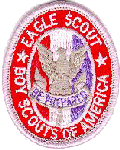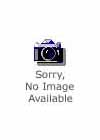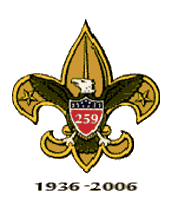Richard O. Covey 

Richard Oswalt Covey (born August 1, 1946) is a former NASA astronaut.
Born in Fayetteville, Arkansas, he considers Fort Walton Beach, Florida, to be his hometown. He graduated from Choctawhatchee High School, Shalimar, Florida, in 1964; received a bachelor of science in engineering sciences with a major in astronautical engineering from the United States Air Force Academy in 1968, and a master of science in aeronautics and astronautics from Purdue University in 1969.
As a member of the US Air Force, Covey was an operational fighter pilot 1970-1974, flying the F-100, A-37, and A-7D. He flew 339 combat missions during two tours in Southeast Asia. At Eglin Air Force Base, Florida, between 1975 and 1978, he was an F-4 and A-7D weapons system test pilot and joint test force director for electronic warfare testing of the F-15 Eagle. He has flown over 5,700 hours in more than 30 different types of aircraft.
Selected as an astronaut candidate by NASA in January 1978, Covey became an astronaut in August 1979. A veteran of four space flights, STS-51-I in 1985, STS-26 in 1988, STS-38 in 1990, and STS-61 in 1993, Covey has logged over 646 hours in space.
Prior to the first flight of the Space Shuttle, he provided astronaut support in Orbiter engineering development and testing. He was a T-38 chase pilot for the second and third Shuttle flights and support crewman for the first operational Shuttle flight, STS-5. Covey also served as Mission Control spacecraft communicator (CAPCOM) for Shuttle Missions STS-5, 6, 61-B, 61-C, and 51-L (the Challenger Disaster). During 1989, he was Chairman of NASA's Space Flight Safety Panel. He has held additional technical assignments within the Astronaut Office, and has also served as Acting Deputy Chief of the Astronaut Office, and Acting Deputy Director of Flight Crew Operations.
On August 1, 1994, Covey retired from NASA and the Air Force. Covey is married and has two grown daughters. After the Columbia Accident in 2003, Covey, along with retired Air Force Lt. General Thomas Stafford, headed the Stafford-Covey Commission in returning the Space Shuttle fleet to space, starting with the STS-114 mission. In 2005, Covey received the Distinguished Eagle Scout Award from the Boy Scouts of America--he became an Eagle Scout in 1960 when his father was stationed at an Air Force base in California. Covey was featured in a 2005 issue of Eagletter, a magazine for members of the National Eagle Scout Association.
Space flights
On his first mission, Covey was the pilot on the five-man crew of STS-51-I, which launched from Kennedy Space Center, Florida, on August 27, 1985. During this seven-day mission, crew members deployed three communications satellites: the Navy SYNCOM IV-4, the Australian AUSSAT, and American Satellite Company's ASC-1. The crew also performed the successful on-orbit rendezvous and repair of the ailing 15,000 pound (6.8 t) SYNCOM IV-3 satellite. This repair activity involved the first manual grapple and manual deployment of a satellite by a spacewalking crew member. Mission duration was 170 hours. Space Shuttle Discovery completed 112 orbits of the Earth before landing at Edwards Air Force Base, California, on September 3, 1985.
He next served as pilot on STS-26, the first flight to be flown after the Challenger accident. The five-man crew launched from the Kennedy Space Center, Florida, on September 29, 1988, aboard the Space Shuttle Discovery. Mission duration was 97 hours during which crew members successfully deployed the TDRS-C satellite and operated eleven secondary payloads which included two student experiments. Discovery completed 64 orbits of the Earth before landing at Edwards Air Force Base, California, on October 3, 1988.
On STS-38 Covey was the spacecraft commander of a five-man crew which launched at night from the Kennedy Space Center, Florida, on November 15, 1990. During the five-day mission crew members conducted Department of Defense operations. After 80 orbits of the Earth in 117 hours, Covey piloted the Space Shuttle Atlantis to a landing on the runway at the Kennedy Space Center on November 20, 1990. This was the first Shuttle recovery in Florida since 1985.
On his fourth flight, Covey commanded a crew of seven aboard the Space Shuttle Endeavour on the STS-61 Hubble Space Telescope (HST) servicing and repair mission. STS-61 launched at night from the Kennedy Space Center, Florida, on December 2, 1993. During the 11-day flight, the HST was captured and restored to full capacity through a record five space walks by four astronauts. After having traveled 4,433,772 miles (7,135,464 km) in 163 orbits of the Earth, Covey landed the Endeavour at night on the runway at the Kennedy Space Center on December 13, 1993.

